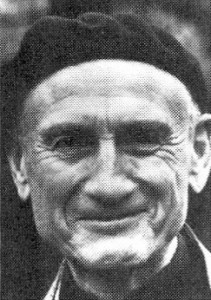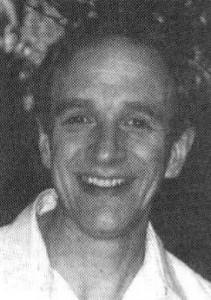The Zen of Living and Dying
A Practical and Spiritual Guide
Philip Kapleau
Shambhala: Boston, 1998
288 pp., $15.95 (paper)
Lessons from the Dying
Rodney Smith
Wisdom Publications: Boston, 1998
224 pp., $16.95 (paper)
For a man writing about the Great Unknown, Philip Kapleau seems oddly knowing. He tells us, for instance, of the nine parts that constitute consciousness according to Buddhist psychology, and states that three of them—the seat of I-awareness, the storehouse consciousness, and the formless Self-consciousness—survive death. He also describes the steps these parts go through in the intermediate phase between death and rebirth; yet in a copiously footnoted text, these passages are not referenced, leading to the obvious question: How do you know? The great teachers taught it, I suppose. But how did they know?
Kapleau has not written a narrowly Buddhist book. He quotes from a variety of sources, including Plato’s account of the death of Socrates and Kapleau’s encounter with his own personal friend Duncan Phyfe. When Kapleau asked Phyfe what he thought was coming after death, the man replied, “All the most wonderful things one could conceive of. Death is nothing but an ongoing expansion of life, to which there is no limit.” (How do you know that, Duncan Phyfe?)
Actually, the intermediate realm that Kapleau himself describes sounds rather grim, including “loud, startling noises, sudden bangs, cracks, and rumbles . . . howling wind and raging fire.” It’s no wonder we might opt for a new life.

For Buddhists, the great matter of life and death includes this odd circularity. The teaching is that the “I” that we believe ourselves to be is a fantasy. What is actually moving from moment to moment is more like a constantly changing process, a flow of energy. Death is a change, to be sure, but just one in a long series, no more startling, perhaps, than the onset of puberty. After death the energy continues, and keeps going through changes, on to a new birth.
Philip Kapleau is a revered teacher, one of the first Westerners to practice authentic Zen and the author of the seminal text Three Pillars of Zen. The Zen of Living and Dying is a revision of his 1989 book The Wheel of Life and Death, and includes sections on death, dying, karma, and rebirth. But Kapleau admits in his foreward that his subject is really just “one nameless ‘It,’ ” and states that his basic aim is “to help the reader learn to live fully with life at every moment and die serenely with death.”
As a longtime teacher, Kapleau is probably at his best when he reviews the standard teachings of Buddhism. His explication of the nine parts of consciousness is quite interesting, as are his discussions of the Four Noble Truths, rebirth and karma. I did feel that some remarks about karma were slightly wacky (“One cannot but speculate that in a previous existence [Seng-chao] had killed someone”): we can acknowledge the deep truth of that teaching without knowing how it plays out in particular instances. I also felt that he was rather hard on suicides, most of whom are in the grips of a brand of depression that the rest of us can hardly imagine. But Kapleau writes well and with real authority, and gives an interesting overview of Buddhist teaching.
Rodney Smith, who teaches in the vipassana tradition, has written a book that is more humble than Kapleau’s, but also more accessible and ultimately deeper. Smith began in a lay monastery in the United States, then spent some years as a forest monk in Thailand. In the early eighties however, he felt a certain dryness in his life, and subsequently disrobed in order to become a hospice worker, which he has been since 1983. He is currently Director of Hospice of Seattle and leads vipassana retreats at the Insight Meditation Society and elsewhere.
In fact, Lessons from the Dying is almost deceptively humble, with its modest title and somewhat plodding structure. Smith has spent fifteen years accompanying people as they face the ultimate unknown of existence, and admits: “I am still as mystified about death as I was many years ago in the forest.”

His book starts slowly, and the early chapters seem a series of platitudes, but by chapter 4 he is getting more concrete. His premise is that in death we confront the unknown, and that “the known cannot grasp the unknown.” We cushion ourselves with beliefs, but they are really just thoughts in the mind and disappear in the face of hard experience. Smith states that some of the most difficult deaths he has witnessed were those of people who believed death to be a spiritual experience—and who could not therefore open up to it as it really was.
According to the Buddha, not everyone fears death. “Only those who thirst after sense pleasure, or thirst after the body, or perform a lifetime of unwholesome deeds, or are confused about the way things are, fear death.” While the exceptions seem to comprise most of the human race, Smith has found more than a few fearless people, including an old woman named Roxanne, who had “a large hole in the middle of her living room floor where chickens from under her house would fly in and out.” When Smith asks why she is so calm in the face of her terminal illness, she replies: “Death don’t scare me no more, honey. I had two of my children die in my arms. I have looked Death right in the eyes and his eyes are kind.”
Informed by Buddhism and by longtime practice, Lessons from the Dying is rooted in simple experience. It deals with material that we might think of as psychological—our need to face our shadow, for instance—yet sees it from a wide perspective. And it keeps coming back persistently to the wisdom the dying have for us: the way to live is to be simply, unpretentiously human; relationships with those we care for are more important than anything we can possess, including knowledge or other attainments; the cause of our suffering lies not in the facts of our lives, but in the way we relate to them; the love inside us does not require a beloved but can be diffused everywhere and over everyone. Death—like life—is experienced most gracefully as a free fall into the unknown. It takes from us everything we possess, but really only shows us that we never possessed anything in the first place.
Thank you for subscribing to Tricycle! As a nonprofit, we depend on readers like you to keep Buddhist teachings and practices widely available.